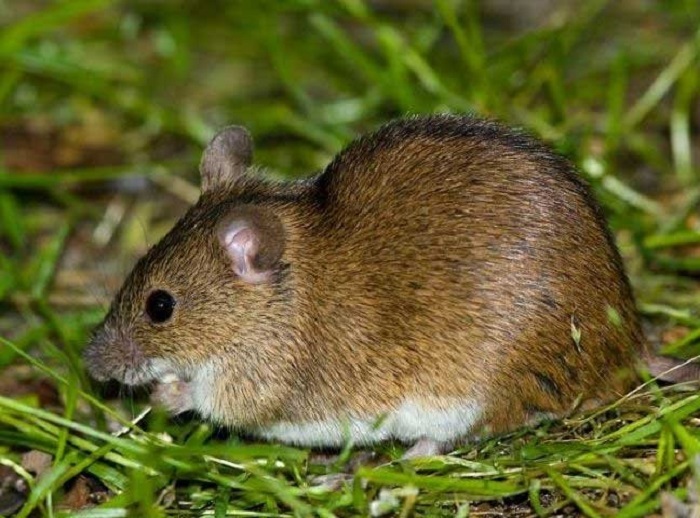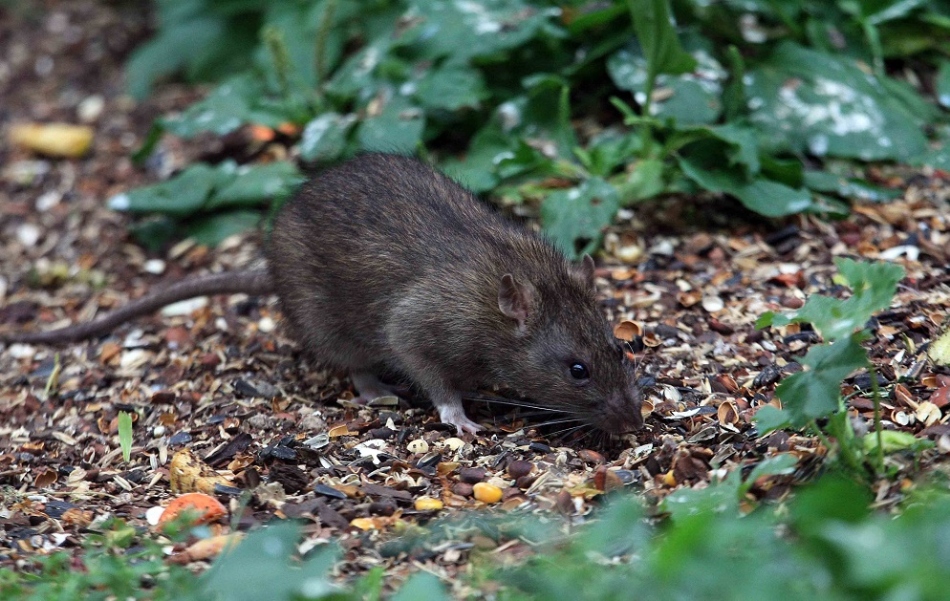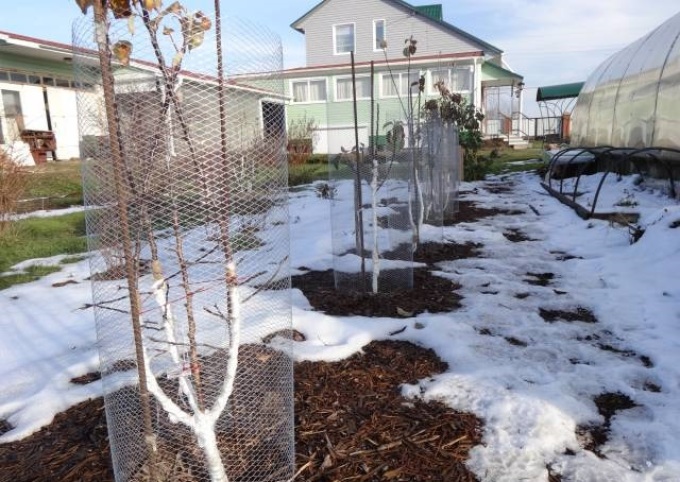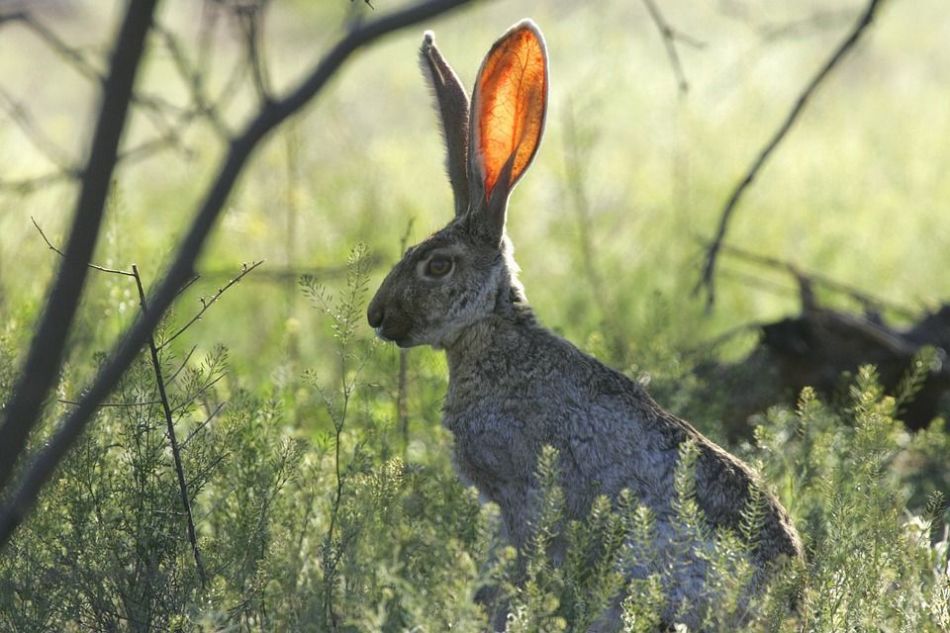In this article, you will learn how to recognize the pest on your site, about methods for combating rodents and other pests.
Content
- What rodents live in dachas, in the garden and garden, underground: varieties
- How to deal with garden and garden rodents - earthen mice, rats in the garden, garden, greenhouse: effective methods, folk remedies, tips
- Video: How to get rid of mice and rats?
- How to deal with moles in the garden and garden: effective methods, folk remedies, tips
- Video: an effective and cheap method of scaring a mole
- How to protect the garden from hares, mice and other rodents-pests in winter: effective methods, folk remedies, tips
- Video: How to protect trees from rodents in winter?
What rodents live in dachas, in the garden and garden, underground: varieties
For summer residents, the fight against pests on the site is relevant all year round: in summer and spring, pests eat bulbs and roots of plants, vegetables, flowers, in winter - gnaw bark from trees. Summer residents value their work, and it is doubly insulting when cultural plants grown with their own hands, fruit trees, vegetables are attacked by various pests. Many gardeners, summer residents shrug their hands, the fight against pests often does not end in anything. For several months, rodents disappear, and then appear in larger quantities and with good appetite.
If pests appear on your site, at all costs you need to get rid of them. Before taking measures, let's figure out what rodents can live underground, in the garden, in the garden, which of them are truly harmful.
Among the most common unwanted pests are:
- Fully mouse
- The rat is gray
- Mole
- Shrew
- Water rat
- Hares
- Some birds
Important: the largest group of pests is rodents. Their value ranges from 5-35 cm. Fight rodents It is difficult for the reason that these animals are careful, do not come across eyes. Among the rodents there are smart animals, for example, a rat, the fight against such animals is particularly troublesome.
The mouse-full of mouse is divided into several types:
- The field is ordinary
- Redflower is red
- Paste's field
Fully mouse ordinary gray with a dark strip on the back. The body length is about 10 cm. It eats grain, damages potatoes and bulbs of flowers. Lives a mouse-a-bed in a small depth of ground. She breaks through complex confusing moves, has a pantry, where she blows all stocks. Immediately, underground, there is a mouse nest. The mouse-field propagates very quickly, especially in the summer. Every three weeks a new brood of up to 13 cubs appears. Young mice on the 21st day of life are already ready for an independent life, and at the 5th week of life, new offspring can already produce. Mice-overwhens live in colonies.

Redflower is red It differs from an ordinary groove with its reddish-brown color. The size of this rodent is not more than 11 cm. The gatherings of the redheads live one by one. They build nests in shelters under the stones or in the voids of trees, under a bunch of brushwood. From the inside, the nest is lined with dry grass, the entrance to the hole is covered with foliage. Red-haired mouse brings offspring 3-5 cubs 3-5 times a year. It feeds on seeds of plants and trees, in the summer it switches to green foliage and shoots, feeds on the bark in winter. A redhead is capable of climbing trees, its nests can be found in the nests of birds or birdhouses.
Paste's field It has a brownish fur. You can distinguish this variety from an ordinary mouse by the fur. The flooded fur has a longer fur. The body length of the largest individual can reach 13 cm. For a year, offership brings 2-3 times. Lives in meadows, near trees and shrub plantings. The holes are done underground in thick grass. The harm brings to plants, eats green shoots and leaves, feeds on bark and shoots in winter.

The rat is gray It is dangerous with its neighborhood not only because of harm to plants, trees, animals. It is a carrier of infectious diseases. The length of the rat’s body ranges within 19-25 cm. It has a long tail, which is slightly shorter than the body and is from 17-24 cm. The gray rat is also called a spray. This animal is very cautious, can adapt to various conditions and capture the human life mode in order to act without harm to oneself. Basically, the gray rats are active at night.
Pasyuki can eat both plants, grain crops, and eggs, small rodents, lizards. A rat, deprived of the opportunity to run away, can attack a person. Can swim. Rats can live in buildings (shed, basement, etc.), in the holes dug underground (the length of the hole can reach 2-5 m), in places covered with vegetation. In a favorable year, the rat can bring up to 7 times 9-10 rats.

Water rat It lives near swampy places or in areas with high humidity. It feeds on vegetation, berries, root crops, seeds. He knows how to swim and dive well. For wintering, when the water freezes, moves closer to human grounds, pulls out complex running holes in the gardens that attract a rat with their loose soil.
Shrew It looks like a mouse, but is distinguished by an elongated nose in the form of a proboscis. The animal feeds on larvae, rainworms, insects, living in the soil. If you look from this side, it benefits. But on the other hand, the shrew digs the garden in search of its moves, damaging the root system of plants. Therefore, summer residents are fighting with a beast.

Mole, like a shrew, feeds on invertebrates, insect larvae. But at the same time, the root system of vegetable crops is damaged. Often you can see numerous pits dug in a mole. The body of the mole varies within-5-21 cm, and the weight can reach 170 gr. Mole -mole is velvety, thick, even. The animal is blind, but has very good hearing and smell.
Pests can also be attributed zaitsevactively harm the garden in the winter-spring period, and birds, eating fruits, berries, nuts in the summer. Hares gnaw the shoots of trees, bark, destroy the kidneys. Young trees and shrubs are especially affected.


How to deal with garden and garden rodents - earthen mice, rats in the garden, garden, greenhouse: effective methods, folk remedies, tips
To combat rodents, summer residents use various methods of struggle. They can be divided into:
- Chemical. The use of various pesticides.
- Ultrasonic. Ultrasound devices are not heard by a person, but well -heard rodents are well audible.
- Traps. Mousers, traps, adhesive traps and other devices that help catch pests.
- Folk methods. This includes noise repeller from improvised means, planting various species of plants that do not tolerate pests, protective fences and grids for trees, shrubs.
Important: bait with poison, designed for rodents-pests, can be poisoned by street cats, home and wild birds. Therefore, many refuse this method.
Pesticide used in this form:
- Liquid baits. The poison is added to the water, milk. The containers with poison are placed on the site.
- Products attractive for rodents (cheese, seeds, lard, bread in vegetable oil) are mixed with poison and laid out in the habitat of rodents.
- The poison in the form of a powder is scattered near the holes, the paths of rodents.
To achieve a good effect in the case of the use of baits with poison, first they feed rodents without poison. After 2-3 days, when they saw that the food was disappearing, you can decompose new “treats”, but with poison. After a couple of days, control baits with poison are laid out.
The poisons of fast action include:
- Yellow phosphorus
- Rat
- Vacor
- Sulfate Tallia
- Fluorcetamide
- Glyftator
Important: If you use poison to get rid of unwanted overlaps, be sure to strictly follow the instructions for breeding poison, take care of individual protection. Follow the conditions for further storage of poison residues.

Ultrasonic devices To scare away rodents are popular. They do not harm people, but act well on rodents. The disadvantages of such devices are the limited action of ultrasound. The larger the range of the device, the higher its cost. Ultrasonic devices can eat from an electric network or from batteries. If there are obstacles in the path of sound vibrations (for example, a wall), then ultrasound will not penetrate through them. Even a thin plasterboard partition blocks ultrasound. Ultrasonic devices are designed for use in rooms. They are suitable for scaring rodents in greenhouses, warehouses, utility rooms, in the house.

Important: one of the most reliable methods for combating rodents is a cat. Especially for these purposes, ordinary uniform cats living on the street and loving mice are suitable. Even the smell of a cat on the site can scare rodents.
Traps It is convenient to put in limited rooms. In the garden and in the garden, where rodents can act in whole colonies, it is pointless to set traps. The advantage of the use of traps is their environmental friendliness. Often traps are used for the control effect, in case one of the pests did not eat poison. There are several options for rodents:
- A trap on the jet. There is a special adhesive on the cardboard, having got into which, the mouse or rat will no longer run away with any efforts.
- Ordinary mousetrap. An old reliable method for catching rodents. A food bait is placed in a mousetrap, while it needs to be updated once every 2-3 days. It is also necessary to regularly check if the mouse came across.
- Water traps. Water is poured in the container, a bait is placed in the center, or the edges are coated with a fragrant product for rodents. Small rodents fall into the water when trying to get to the treat, but they can’t get back.
- Slippery baits. For this, a neck is cut off in a plastic bottle. A small amount of sunflower oil is poured inside so that the walls are slippery. The bottle is placed under the slope. Rodents climb into the bottle, they cannot get back.
Important: if you decide to catch a rodent using a bait bait, find out about its tastes. The shrew can be caught on a larva or worm, rat or mouse - on a piece of cheese, seed, lard.


One of the methods for combating rodents that does not require costs is to flood the holes of water, preferably boiling water, from a hose.
Rodents cannot stand the smells of such plants:
- Mint
- Sagebrush
- Ryabchik Imperial (royal)
- Black Buzina
- Black root medicinal
- Bagolnik swamp
- Narcissus bulbs
The branches and leaves of these plants can be laid out near the holes and paths of rodents, in the garden, in the greenhouse. Trees and valuable shrubs spray mint oil to protect the bark and shoots. Narcissus bulbs can be thrust into holes or placed around the perimeter of beds with vegetable crops.

Video: How to get rid of mice and rats?
How to deal with moles in the garden and garden: effective methods, folk remedies, tips
Important: the mole has a well -developed hearing. This feature is known to gardeners, summer residents and successfully use it in the struggle for the safety of the crop.
The number one method in the fight against mole is noise repeller. To destroy this animal is inhumane, because it does not eat tubers of vegetables, flowers, does not destroy stocks and vegetation. On the contrary, the mole is even useful for the soil. It provides good soil drainage. Another thing is that in the process of its activity, mole violates the root system of plants, can also damage the appearance of a well -groomed lawn. It should just be expelled from his territory so that he continues to get his food in the form of larvae and worms in another place.
The noise creates adverse conditions for the life of Mole. To do this, use various devices, both homemade and store.
Consider the designs and options for mole noise repeller:
- The simplest thing that can be done is to arrange a stick around the perimeter or in a checkerboard pattern. On sticks to put on ordinary tin banks that will make characteristic sounds with the slightest blow of the wind.
- According to the same principle, plastic bottles are used. Previously, holes are made in the bottles so that the wind is buzzing, falling into them.
- Experienced people know such a grandfather method as reeds. To do this, choose long stems of reeds, cut the top to make a tube. Then these tubes are inserted into the holes, leaving about 0.5 m of its length above the ground. The wind "howls", falling into these tubes and perfectly scares the mole.
- There are also special sound repeller to combat the mole. It is recommended to place several such devices on the site to achieve a good result.
The method of placing tins and noisy devices on the site helps to get rid of one more “undesirable guests” in the garden - birds. Squorses, sparrows, soyrs and other species of birds can ruthlessly peck mature berries and fruits, leaving almost nothing to the owner.

Mole does not like the smell of certain plants. Just as rats and mice, moles do not tolerate the smell of the bulbs of the daffodil and the flowers of the hazardous rheythoma. Black beans are another mole-growing plant. Summer residents that plant these plants around the perimeter or in a checkerboard pattern on their site note that the number of mounds of the Earth decreases, and completely disappears over time.
Important: it is recommended to crush the bulbs of daffodils before laying in the hole, they are a natural poison for a mole and other rodents.
There are other smells that scare the moles:
- Tar
- Naphthalene
- Kerosene
- Calcium carbide
Moisten pieces of fabric in the selected solution, and then bury them in the ground.

In stores with goods for giving, you can purchase traps for moles of various designs. Catching a mole in such traps is not easy. Firstly, you need to install a trap where the mole will begin to dig a move. Secondly, the mole is very smart, he has a well-developed sense of smell, he knows how to bypass the traps.
In order for a trap or a trap to work, the following actions need to be done:
- First find the main move.
- Dig the hole out of this course.
- At 1 m from the hole, make a hole in which you place a trap.
- The trap should be covered with earth.
Thus, a draft will appear in the hole of the mole, which is not to the liking of the animal. Soon, the mole will come to close the hole and fall into the trap. A properly set trap can work within 1 hour.
Important: the mole is very voracious, and the peak of its activity falls on the dawn. At this time, you can see how a mole is looking for food in the upper layers of the soil. The soil moves will be noticeable. At this moment, you can throw a mole from the soil with a shovel. It is necessary to do this sharply and importantly to accurately determine the location of the mole.
The dog is another reliable way to capture the mole. Having smashed the whereabouts of the animal, the dog begins to dig the ground, and he takes out a mole.
Some summer residents resort to the most cruel measures, if it is not possible to remove the mole with humane ways. Seeing the fresh mound of the earth, they dig a hole and pour water under a large pressure from a watering hose. The mole, feeling danger, gets out.
The best way to protect the site is not to fight a mole, but to prevent its penetration on the site. If you saw a mole in the neighboring areas, but have not yet found it at yourself, it's time to start preventive measures. To do this, you can dig a small metal mesh to a depth of 0.5 m around the perimeter of the site or garden. Part of the grid should be left above the ground. The grids for such a fence can leave a lot, the process of instillation of the grid is laborious, but it is worth it. A rainworms will be able to freely move through the holes in the grid, but the mole will not be able to get out.
It should be understood that the mole does not fall into winter hibernation, so it can appear on your site at any time.
Video: an effective and cheap method of scaring a mole
How to protect the garden from hares, mice and other rodents-pests in winter: effective methods, folk remedies, tips
In winter, the crop is harvested, nothing threatens vegetable crops in the garden. But there are also garden trees and shrubs, which in the cold season are attacked by hares, mice, rats. These animals do not fall into hibernation, and there is not so much feed in nature, so the rodents are directed straight to the garden.
Rodents act at night, when nothing threatens them, but especially arrogant hares can be seen in the garden during the day. Hares can cause great harm to trees. With their strong teeth, they gnaw the bark of the tree so that the tree can die. The best treat for them is young seedlings, who, after such eating, simply have no chance to survive. Old trees hares, as a rule, do not touch.
Reliable protection against hares is a metal fence. Its height should be at least 1.3-1.5 m, otherwise the hares can easily jump over a low fence. In addition, the fence must be carefully dug up to a depth of at least 30 cm. This will protect from the dig, which hares will easily be carried out in case of a hunger strike.

If there is no way to implement an idea with a fence, you should cover the trunks of trees. To do this, use:
- Old nylon tights saturated with kerosene, gasoline.
- Dense oiled paper, and roofing roofing roof.
- Plastic bottles cut along and fixed around the trunks of young trees.
- Brushing branches cover the barrel without gaps, then fastened with a rope. Wormwood should be placed with tails down. This plant is to protect the bark of wood not only from hares, but also from mice.
- Branches of coniferous trees can also be covered with a barrel. At the same time, branches are placed in several layers, with needles down. Several layers of the spruce do not leave the hares a chance to get to the bark.
The coating of the tree trunk helps not only get rid of hares, mice and other pests, this method also protects the tree trunk from sunburn, from frost.
There are folk remedies-consuming rodents. You will need you to make such a fund:
- 4 pods of burning pepper;
- 2 tbsp. olive oil;
- Some water;
- A little dishwashing meal.
First, chop the pepper, mix it with other components and dilute with water in a ratio of 1: 8. With this tool, spray the trees and the earth around them. The disadvantage of the method is that after the rain the procedure should be repeated.
Another way to repel rodents is a solution of bastard lime, cow manure and carbolic acid.
If you do not want to waste time preparing scaring mixtures, you can buy ready -made powders and solutions. They will not harm the rodents, but they will be scared away from the territory.

Mice and rats dig holes underground for the winter. Even water rats move closer to land, winter in warm soil. These rodents love to twist their nests in places of accumulation of brushwood, foliage, old stumps. In order not to make your site with a favorable place for the habitat of such “guests” should be carefully prepared for the winter:
- After gathering the crop, rake all the foliage and brushwood, and then burn.
- The beds are digging.
- The trunk circles of trees and shrubs are also dug.
- Get rid of old stumps, the remains of fallen trees.
Important: some gardeners insulate trees with straw. From the point of view of protection against rodents, this is not the best method. Warm straw attracts small rodents, they can easily save a nest here and eat the bark of trees all winter.
Some gardeners use the method of trampling snow. The mouse or rat will not dare to break through a dense snowdrift, so he will look for a new place to eat.
In access, reserves of attractive food for mice cannot be available. Often, these rodents rush into the utility rooms and in the house if there are food supplies in the public domain.
Protection from mice and rats can be launched beams of herbs that do not like rodents. If you notice that nothing helps, and the mice are still found on the site, set the pesticides.
Pests on the site are unpleasant and troublesome phenomenon. A number of complex events helps to achieve a good effect in the fight. Do not forget, sometimes it’s easier to prevent the appearance of rodents than to get rid of them later. It is unrealistic to get rid of pests forever, under favorable conditions, they can again settle in the country, in the garden, in the garden. The summer resident must always be carefully monitored and ready to take timely measures.







